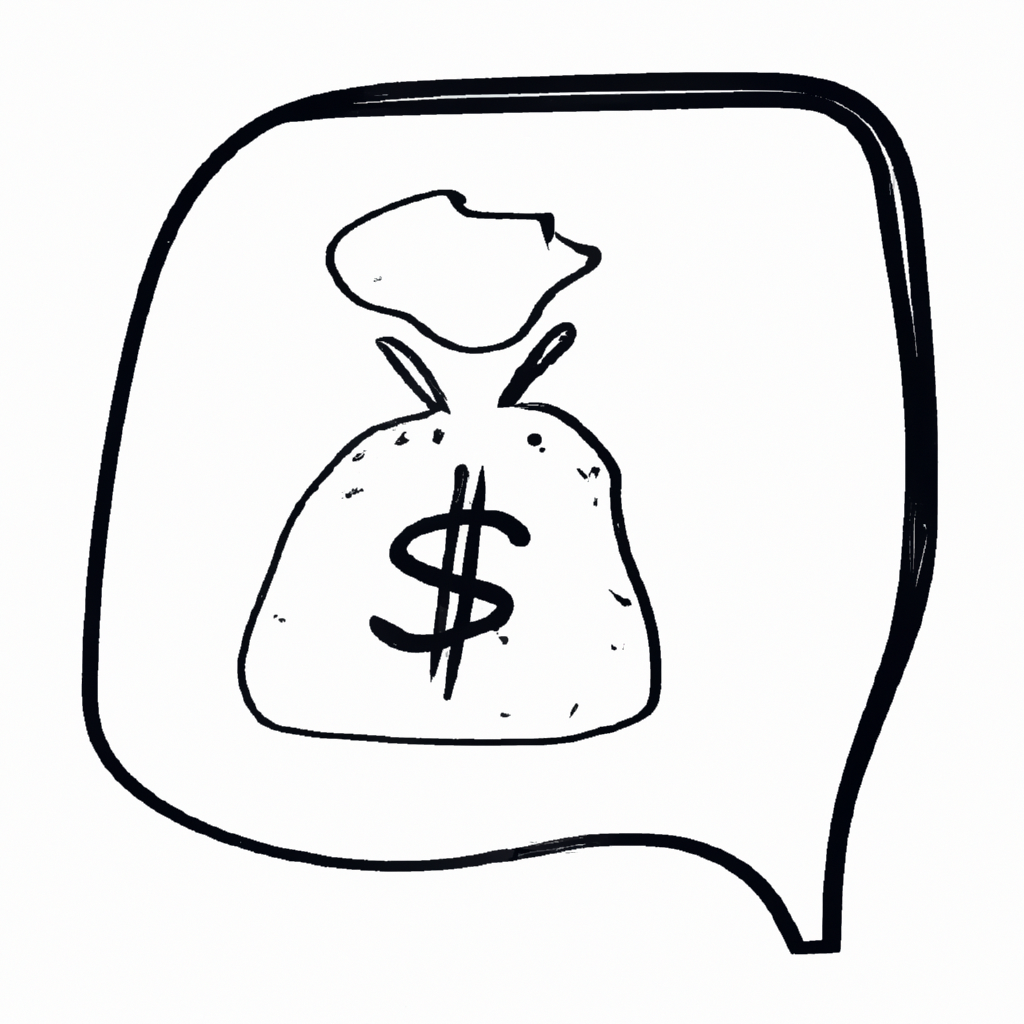What if you could have David Ogilvy give feedback and ideas for your next campaign? Read more about the lessons from the Father of Advertising that can be applied to nonprofits.
Ogilvy Training Data
What if we could have a conversation about fundraising strategy with David Ogilvy, founder of Ogilvy a leading marketing/pr firm and deemed the ‘Father of Advertising’?
I think there are many timeless lessons that still apply to current strategy that can be gleaned from looking backward. Decades before the dawn of digital ads and social media, advertising legend David Ogilvy penned his seminal book “Ogilvy on Advertising” sharing hard-won lessons on how to effectively persuade consumers.
While focused on selling products, many of Ogilvy’s principles and “rules” around research, messaging, and motivating action remain surprisingly relevant today, especially for nonprofit organizations seeking to engage donors and volunteers. By translating these lessons into the nonprofit context, we can gain valuable insights into crafting campaigns that inspire participation rather than simply grab attention. Though originally focused on advertising, Ogilvy’s wisdom contains enduring truths around driving action and results that can aid any cause, even with today’s new tools and platforms.
The 5 key points from “Ogilvy on Advertising”
- Do your homework – Study the product, its competitors, and research consumers’ views before developing advertising. Thorough understanding leads to big ideas.
- Make the product the hero – Focus ads on the virtues and benefits of the actual product. Don’t rely too much on cleverness.
- Repeat what works – Run successful ads repeatedly until they stop selling. Don’t discard them too quickly just for novelty’s sake.
- Learn from direct response – Direct response ads that elicit direct orders reveal what really sells. Apply those lessons to general advertising.
- Focus on selling – Judge ads by sales results, not awards. Creativity matters only if it sells. Remember your goal is persuading consumers.
Now let’s translate these for nonprofit fundraising:
- Do your homework to know your donors – Research your donors, their interests, and motivations for giving. Survey existing donors on what compelled them to support you before.
- Make the mission or program the hero – Focus messaging on your nonprofit’s values, impact, and service. Don’t rely too much on gimmicks or guilt.
- Repeat what works – Keep using effective stories, calls to action, and emotional appeals. Don’t change just for novelty’s sake.
- Learn from direct response – Study annual appeals, door knocking, and other methods that inspire immediate action. Apply those lessons.
- Focus on participation – Judge success by number of donors versus just total dollars raised. Participation builds loyalty and community.
Takeaway #1 Know Your Donors
Ogilvy had an “aha” moment when researching Rolls-Royce – discovering in a trade journal that their engineers focused extensively on reducing noise. This engineering insight became his headline: “At 60 miles an hour the loudest noise in a Rolls-Royce comes from the electric clock.”
For nonprofits, this shows the value of thoroughly researching your donors’ demographics, history, and motivations before crafting appeals. Surveys, interviews, and data analysis can reveal the equivalent of that Rolls-Royce insight – the key emotional triggers, values, and desires of your existing and potential supporters. Those insights should drive messaging and campaigns.
Key Takeaway #2: Spotlight Your Mission as the ‘Hero’
In the book, Ogilvy realized in a flash of insight that taste was irrelevant for whiskey – it was brand image alone that motivated purchases. This showed him that ad campaigns should spotlight the product itself – the emotional impact it provides.
For nonprofits, this means focusing ads on your organization’s values, mission impact, and service results – the heart of your “product.” Rather than gimmicks, spotlight your mission. A charity combating homelessness should feature stories of providing shelter, not just cute mascots.
A great tool to see how different companies make their product the hero is by looking through swipe files curated by sites like https://swiped.co/.
There are a few key ways a nonprofit’s mission or program can become the “hero” of their fundraising campaigns:
- Tell emotional stories about the mission’s impact on real people’s lives. Put a human face on the cause through case studies, testimonials, and videos.
- Use statistics to vividly demonstrate the scale of the problem being addressed. This helps show the mission’s importance.
- Share enthusiastic endorsements from recognizable opinion leaders, celebrities, or experts. Their passion can be contagious.
- Convey the mission as urgently needed and highly solvable to inspire hope and action. Donors want to feel they are fueling breakthroughs.
- Have brand ambassadors who can winsomely explain the mission’s value at events and appearances. A relatable human voice connects.
- Feature the mission’s beneficiaries as the motivational focal point. Helping real people should be the star.
- Illustrate the concrete change created by donor support. Show how gifts further the outcomes step-by-step.
Essentially, nonprofits must craft campaigns where the mission itself shines as the undeniable hero that compels giving, rather than relying on gimmicks or guilt. Clear human impact should take center stage.
Key Takeaway #3: Stick With What Works
Ogilvy was struck by research showing repeated ads retained readership. This convinced him to keep running successful campaigns for years without change. For nonprofits, this means rigorously testing different emotional appeals, stories, and calls-to-action and then reusing what proves most effective. Avoid changing messaging just for novelty’s sake. Analyze results data to double down on what inspires action.
For example, if a mailed appeal with a matching gift incentive consistently outperforms others, keep using that format. Or if a certain donation thank-you gift reliably increases donor retention, offer it in campaign after campaign. Lean into what works.
You can also employ “drumbeat” advertising strategies that repeatedly expose audiences to your messaging.
This could involve:
- Running digital ads on a consistent daily/weekly basis to stay top-of-mind.
- Having monthly giving programs with regular donation reminders.
- Sending a recurring newsletter or print mailing to engage supporters.
- Using weekly social media posts focused on your mission’s impact.
- Creating an always-on text-to-give campaign for impulse donations.
The goal is to develop sustained relationships through habitual positive exposures.
Key Takeaway #4: Learn from Direct Response
Many general advertisers used brief 30-second TV commercials that aim to build vague brand awareness in the 60s. They air these ads sporadically and often buy cheaper late-night slots. However, Ogilvy noticed that direct response advertisers who wanted immediate sales take a very different approach. They would run lengthy 2-minute infomercials making a strong sales pitch directly to the viewer. And they would concentrate their spending to air these infomercials during high-viewership primetime slots when maximum numbers of their target audience are watching.
This opened Ogilvy’s eyes to how direct response advertisers carefully test and optimize tactics for immediate action and sales conversion rather than just broad messaging. Their long-form copy and primetime targeting were more effective for their goals.
Ogilvy realized general advertisers could learn a lot from understanding and applying the proven response-focused tactics of direct marketers. The lessons went beyond just copy length and media slots, but those were prominent examples of the difference in mindset.
However, immediate action doesn’t necessarily mean short immediate messages. This runs counter to short-form trends on TikTok, Twitter, and YouTube that occupy our attention. For example, long-form storytelling may still convert better than short snippets – the current long-form podcasts that top business charts are showing this.
Nonprofits should look at direct response lessons from podcasting, email, social media, and texting campaigns. What motivates instant digital engagement and gifts? There are tons of ideas that you can shop on Meta (Facebook) Ads Library.
Make digital appeals personal and highlight donor benefits. Use time-limited offers to create urgency. Focus on optimizing donation channels for mobile. Test different calls-to-action and reduce friction in online giving. Collaboration with experienced digital fundraisers is invaluable to learn what resonates. Immediacy and response are key, even as short-form content proliferates.
Elements to include when studying techniques that inspire immediate action and applying those lessons:
- Analyze effective ad appeals – what motivates rapid response? Personal stories, donor benefits, time sensitivity?
- Look at successful door-to-door and street canvassing – how do they compel instant giving? Passionate explaining of impact?
- Evaluate telethons and phone banks – what makes people donate on the spot? Empathic listening and answering concerns?
- Review tactics like monthly giving programs and recurring emails that generate habitual support.
- Research urgencies and offers that prompt action like matching gifts within 24 hours.
- Survey existing donors on what spurs them to give quickly when appealed to.
- Test digital engagement tactics like emoji reactions, quick polls and unfortunate consequences of inaction.
- Study email subject lines and opening sentences that motivate instant open rates.
- Talk to fundraising professionals experienced at spurring immediate response.
Key Takeaway #5: Measure Participation
Ogilvy had a client who was launching expensive prestige advertising campaigns that received lots of industry acclaim and creative awards. The ads were hailed as beautiful, artistic, and innovative.
However, despite all the praise within the advertising community, the client’s actual sales were declining steadily. The metrics showed the ads were not effectively driving growth.
This was an epiphany for Ogilvy. It exemplified the gap between advertising awards versus tangible business results. Winning creative praise meant nothing if the ads were not boosting sales.
Ogilvy realized that no matter how much campaigns dazzle at awards shows, true success depends on what happens in the marketplace. Results, not applause, are the real test.
For nonprofits, this means focusing on donor participation and retention rather than just total dollars raised or how good something looked.
Don’t get lost in the looks of a campaign, focus on the conversion.
Don’t assume a viral TikTok with tons of views did anything for your campaign.
Growing your community of supporters is the only measure that matters.
Google Analytics is a must-use tool to help understand your campaign performance. Universal Analytics is the new version of this free web tracking tool and can take some time to understand. There is also a great tool from Microsoft called Clarity that is worth checking out.
Set goals around expanding your donor base, repeat donation rates, monthly giving sign-ups, and other loyalty indicators. Track donation source data to optimize outreach channels.
Use surveys and donor journey mapping to understand how people engage initially and over time. Facilitate two-way dialogue to make supporters feel heard.
Share success stories about how many people are involved and the collective impact being made. Highlight growth in conversions. Judge appeals by participation, not industry acclaim. Effectiveness requires diligence more than artistry. Participation builds sustainable relationships.
All that glitters isn’t gold…
The landscape may have shifted, but Ogilvy’s core principles remain as relevant as ever. For all of today’s digital tools and short-form content, nonprofit success still relies on diligent research, showcasing mission impact, optimizing action, and measuring participation.
In a world obsessed with vanity metrics like views and applause, Ogilvy reminds us to focus on what truly matters – forging human connections and inspiring tangible support. This takes dedication more than razzle-dazzle. Mastering the long game wins over chasing quick viral hits.
Ogilvy built an advertising empire by respecting consumers and speaking to their needs. Nonprofits can do the same with donors. As he said, “You aren’t advertising to a standing army; you are advertising to a moving parade.” Meet people where they are, but stay true to who you are.
The next game-changing campaign is out there, waiting to be crafted. Heed Ogilvy’s wisdom, but tailor it to today’s realities. Blend time-tested principles with bold new applications.
Progress lies not in imitation, but in imagination.
Curious what Ogily would say about your campaign or strategy? Why not ask him with this OgilvyGPT chat created by CauseWriter.ai.










